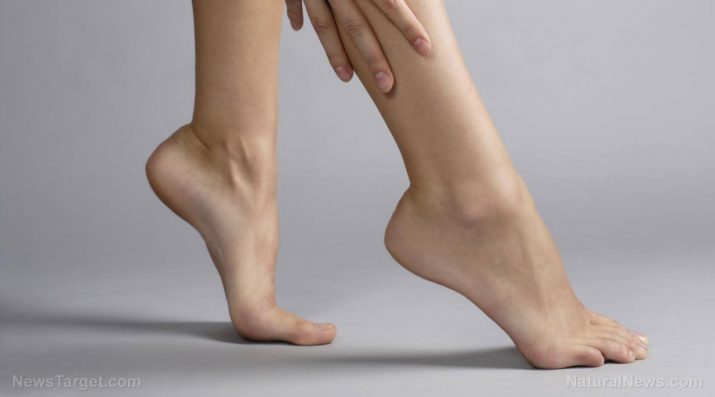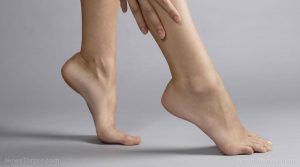
Peripheral vascular disease – causes, side effects and treatments at NaturalPedia.com
Tuesday, June 12, 2018 by Carol Anderson
http://www.naturalpedia.com/peripheral-vascular-disease-causes-side-effects-and-treatments-at-naturalpedia-com.html

Peripheral vascular disease pertains to the narrowing of blood vessels, often caused by cholesterol build-up, which blocks normal blood flow. It commonly occurs in the leg and pelvis area but can sometimes happen in the arms.
In the U.S., 8.5 million people over the age of 40 are affected by this disease, and those who smoke and have diabetes are more at risk.
Worse cases of peripheral vascular disease may lead to gangrene or the death of tissues in the affected area. Although this condition is latent, it can quickly become life-threatening, depending on the severity of the blockage.
Furthermore, it’s difficult to know if a person has peripheral vascular disease since most patients experience little to no symptoms.

Known risk factors and symptoms of peripheral vascular disease
Normally, peripheral vascular disease begins with muscle cramping while a person is either walking or climbing the stairs – it disappears when the leg activity stops. Other symptoms include:
- Pain in the buttocks
- A feeling of weakness in the legs
- Aching pain in the feet or toes even at rest
- Cold sensation on the legs
- Hair loss in the leg area
- Taking time for a foot wound to heal
- Poor nail growth
Risk factors for peripheral vascular disease are categorized into two; controllable and uncontrollable factors.
Controllable factors
- Sugar level
- Cholesterol level
- Blood pressure
- Weight
- Coronary artery disease
- Immobility
- Use of tobacco products
Uncontrollable factors
- Age
- The existence of heart disease
- Belonging to the male gender (higher risk than women)
- Postmenopausal women
- History of high cholesterol, high blood pressure, or peripheral vascular disease in the family
Body systems affected by peripheral vascular disease
Peripheral vascular disease may lead to some serious complications if not immediately attended to. Patients are at risk of tissue death, or gangrene, which can lead to limb amputation is worst cases. There’s also a high possibility of impotence, life-threatening infections of the bones and the bloodstream.
Patients with this particular condition can also experience having pale skin, suffer from pain – whether at rest or moving, – and may find it difficult to heal wounds.
Food items or nutrients that may prevent or relieve peripheral vascular disease
The following food and nutrients are proven beneficial to reduce the risk of developing peripheral vascular disease.
- Gingko
- Grape seed
- Hesperidin
- Horse chestnut
- Aortic acid
- Arginine
- Gotu kola
- Inositol nicotinate
- L-carnitine
- Policosanol
To help prevent the disease from developing, there are specific diets one can take.
- The DASH (Dietary Approaches to Stop Hypertension) diet – Although it is not specifically for peripheral vascular disease, this diet is effective in reducing risks for hypertension and cardiovascular disease by limiting sodium intake. This diet helps with associated coronary artery disease.
- The low-carbohydrate diet – This diet works best with a low-fat diet to promote good cholesterol levels.
- The low-fat diet – Also an effective diet to avoid cardiovascular disease, this diet is also recommended to peripheral vascular disease patients to be able to maintain low sugar levels.
- The Mediterranean diet – This regimen effectively increases good cholesterol in the body.
Treatment and management options for peripheral vascular disease
Patients can naturally treat peripheral vascular disease by following this list.
- Quit smoking – Nicotine – which is the chemical ingested from smoking – is bad for overall health. It has the ability to constrict blood vessel and forces the heart to pump faster.
- Control what you eat – As with any other illnesses, a healthy diet is important. In this case, reduce intake of cholesterol and saturated fat. Sugar consumption must also be controlled to avoid developing diabetes.
- Weight management – Obesity is a risk factor for many diseases including peripheral vascular disease. Aside from watching food intake, exercising regularly can also help.
- Effectively deal with stress – Blood pressure tends to shoot up when a person is stressed. This will also increase the tendency for blood to clot which may cause severe problems.
Where to learn more
- Heart Health Supplements: Avoid Side Effects of Medication
- Get Moving, Avoid Pain and Amputation: Exercise Can Beat Peripheral Arterial Disease
- 18 Ways You Can Eliminate 90% of Heart Disease Risk
- Why More and More People are Choosing Hyperbaric Oxygen Therapy
- Is red wine good for the hearts of type-2 diabetics? Researchers think so
Summary
Patients with peripheral vascular disease suffer from muscle cramping due to the narrowing of blood vessels. This occurrence blocks the blood flow, and severe cases may even lead to the death of surrounding tissues. The condition is more prevalent among men aged 40 and above.
Aside from muscle cramps, other symptoms include buttock pain, tingling feeling in the legs, aching pain even at rest, cold sensation, hair loss in the leg area, and poor nail growth.
Risk factors for this disease are categorized to either controllable – smoking, diabetes, high cholesterol, high blood pressure, – and uncontrollable – age, family history, and the existence of heart disease.
Foods and nutrients such as grape seed, hesperidin, horse chestnut, aortic acid, and a arginine are recommended to help prevent peripheral vascular disease.
As for treatment, there are natural ways to avoid developing the disease like smoking cessation, healthy diet, regular exercise, and stress management.
Sources include:
Tagged Under: Tags: peripheral vascular disease





